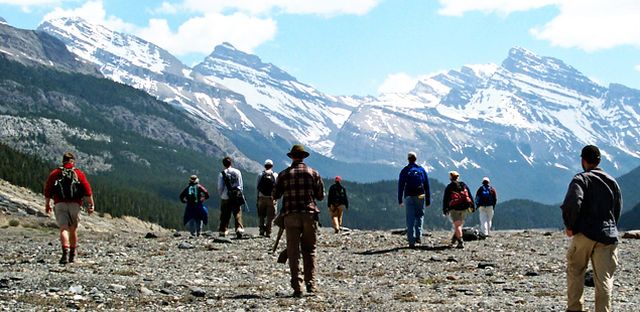
Geology Faculty Publications
New Zealand’s Glaciers
Document Type
Book Chapter
Publication Date
7-2014
Publication Source
Global Land Ice Measurements from Space
Abstract
New Zealand’s mountains support 3,153 inventoried glaciers, 99.4 % of this number (~99.9 % by volume) on South Island, and the remaining few on Mt. Ruapehu, a North Island volcano. Here we (1) provide a historical, geological, and climatic context for New Zealand’s glaciers; (2) review published knowledge of their current state and recent dynamics; (3) present a synoptic overview from ASTER imaging of the glaciers of Mt. Ruapehu (North Island), including relations to volcanic activity; use ASTER to examine changes affecting glaciers of Mt. Aoraki (Mt. Cook, South Island) and selected areas southward to Milford Sound; and (4) review limnological, climatic, and debris load controls on New Zealand’s glacier fluctuations. Half or more of New Zealand’s ice mass has disappeared since the Little Ice Age (LIA). New Zealand has some of the world’s highest ice mass accumulation rates, shortest glacier response times, and greatest concentrations of glacier debris discharge. For the smaller glaciers on steep slopes, especially those in high-precipitation zones and descending into warm climatic zones where ablation is rapid and response times are short, these small glaciers are not responding to the end of the LIA, but rather their observed fluctuations are a response to decadal climate oscillations and centennial-scale trends (including atmospheric warming). Decadalscale climate changes driving short-term glacier fluctuations of fast-response glaciers in New Zealand correlate, foremost, to the Antarctic Oscillation (AAO) and the Southern Oscillation Index (SOI), and, second, to the El Niño Southern Oscillation (ENSO). In contrast, the largest low-sloping valley glaciers have long response times due to their great thicknesses and insulating debris loads, and their lengths exhibit no discernible influence from decadal climate oscillations; consequently they are far out of equilibrium with the long-term warming and short-term fluctuating climate. Many glacier attributes are interrelated in a web of positive and negative dynamical feedbacks. For example, high ice discharge (which by itself is associated with short glacier response times) can remove surficial debris and allow rapid ablation, thereby further shortening response times. Large glacial lakes are characterized by a separate range of dynamic behavior. Lake formation and growth are promoted on slowresponse low-gradient glaciers with thick debris cover, and overdeepened valleys, as well as by climatic warming. Once the lakes enlarge, coalesce, and expand past a critical point, rapid calving and a host of other ablation processes accelerate, commonly beyond control by further climate change. New Zealand’s Southern Alps climate has a strong east–west gradient affecting all its climate parameters. However, thus far the dynamical responses of glaciers of comparable geomorphic types are very similar on the east and west sides of the Main Divide of the Southern Alps. Although we observe substantial climatic and climate change differences across the Alps, thus far glacier responses appear to be uniform across the entire mountain range.
Inclusive pages
675-715
ISBN/ISSN
9783540798170
Copyright
Copyright © 2014, Springer
Publisher
Springer
Place of Publication
Berlin, Germany
Peer Reviewed
yes
eCommons Citation
Chinn, Trevor J.; Kargel, Jeffrey S.; Leonard, Gregory J.; Haritashya, Umesh K.; and Pleasants, Mark, "New Zealand’s Glaciers" (2014). Geology Faculty Publications. 11.
https://ecommons.udayton.edu/geo_fac_pub/11
COinS


